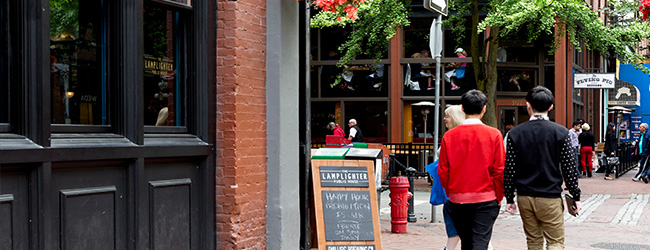
Is Gentrification a Dirty Word
By Darrin Friedman In most major metropolitan areas in recent years, the process of "gentrification" -- the revitalization and subsequent rehabitation of urban districts long forgotten -- has become as commonplace as it was 50-60 years ago. The main difference is that back then, the pilgrims were all moving in the opposite direction: descending into the wilderness of the suburbs to make lives for their families far away from the downtown hustle of city life. Back then, the allure of these suburban enclaves was obvious, whether city residents were trying to escape the aftermath of race riots or simply longing to experience all the prefabricated glory of newly built homes on a quarter-acre of land with the promise of green space and untapped opportunity. At that time in history, the traveler crossing into the great suburban unknown was seeking a new kind of living. Today, with their children grown and their nests emptied, a new generation -- in fact, often the children and grandchildren of those original pilgrims -- are flocking back to where they came from, the glory of a glamorous and exhilarating life in the city calling them back to their places of origin. But in order for each major redevelopment site to be established, another block of older, more run-down, less expensive homes has to be demolished. And this is the "ugly side" of gentrification -- the displacement of the less fortunate to make way for the more prosperous. Across America, in every major city, those with money are displacing those without. It is true. It is fact. Some cities have handled it better than others, establishing programs centered around helping those in lower income brackets achieve the dream of home ownership. But the simple fact of the matter is that these days, the very neighborhoods in which some residents were born and grew up are now unaffordable to them. After all, these neighborhoods are now the "trendy" place to live, with chic restaurants and loft-style condo developments. They are bursting with organic food markets and gleaming stadiums and swanky businesses that have completely obliterated the older neighborhoods that stood before. For decades, city governments have proudly called this trend "revitalization.” Many cities have now experienced a complete turn-around in citizenry, demographics, businesses, and housing values. These "revitalized" cities have rediscovered themselves and been reborn, offering everything a person could want -- that is, of course, if a person can afford it. Please do not misunderstand. The rebirth of the American city is a wonderful thing. It has proven to be one of the most important trends of the last 20 years, driving the real estate industry (and so many other industries) to enormous heights and pouring wealth and resources into these cities' needy economies. However, many people -- including many families who were the original residents of these neighborhoods generations ago -- have been left behind. Some might even say "driven out." And frankly, that makes me sad. After all, we should all be moving forward together.





